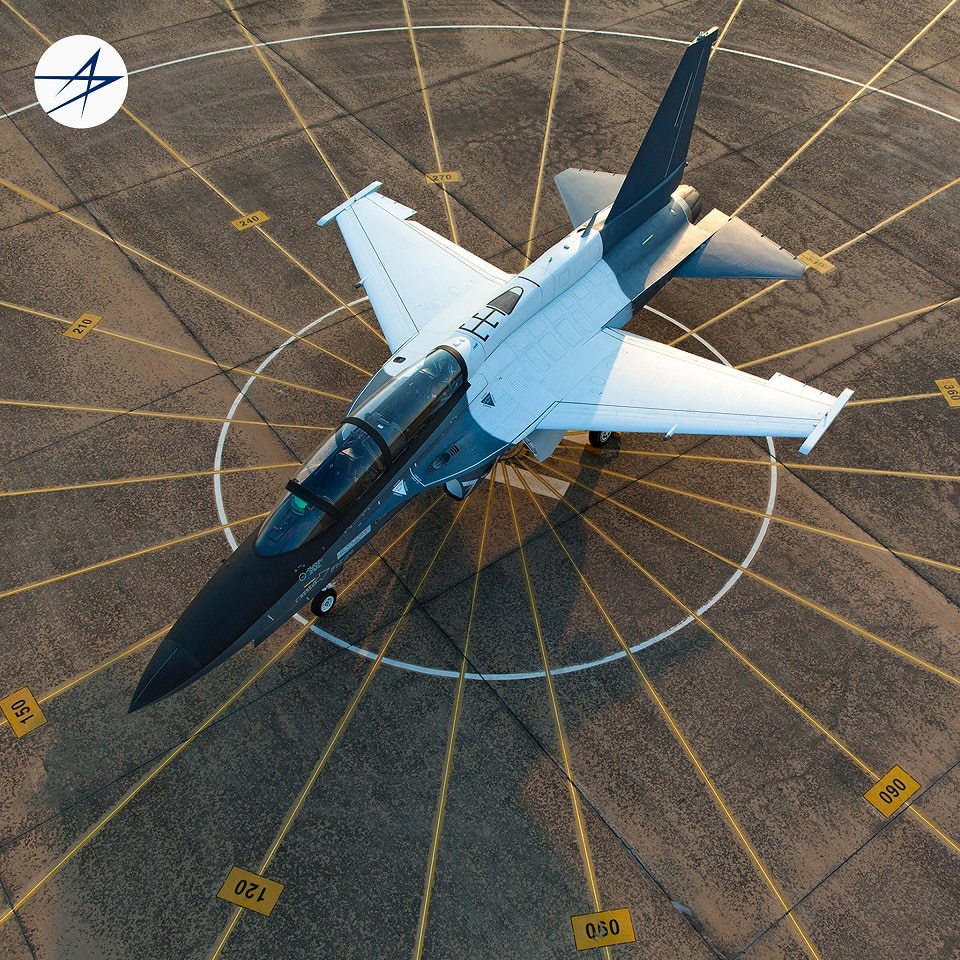Aerospace
Lockheed Martin, KAI & Red 6 Announce Initial Augmented Reality Integration Work For T-50 Platform

Lockheed Martin, Korea Aerospace Industries, and Red 6 announced today that they have begun developing engineering solutions and a technology roadmap to establish a path for Red 6’s Advanced Tactical Augmented Reality System (ATARS) implementation into the T-50 platform and associated ground-based training systems.
A T-50 demonstration and the Red 6 ATARS technology, which is electronically networked with the Lockheed Martin Prepar3D software simulation suite, are part of the initial technology integration. With the help of an early technical solution, Lockheed Martin and Red 6 gain more practice integrating simulations that may later be used as embedded training for the T-50 programme and ground-based training systems.
Comparison of the Tejas Mark1 vs korean T-50 Golden eagle(Opens in a new browser tab)
ATARS is an all-domain, multi-node augmented reality (AR) system that offers several users a full-featured outdoor synthetic training environment. Red 6 technology enables pilots to enter realistic, scalable in range and ratio, secure, simulated training environments while airborne in the most dynamic of outdoor environments, allowing them to experience the cognitive loads of physically flying airplanes while capturing the value of synthetics.
Burnett noted that the T-50 programme is still in demand on a global scale. For three upcoming missions—tactical training, adversary air support, and tactical fighter surrogate—Lockheed Martin has submitted the TF-50A variant to the U.S. Air Force’s trainer programme. With further upgrades like as radar, an electronic warfare system, a tactical data connection, and other features to suit Air Combat Command requirements, the TF-50A is outfitted as a light attack fighter/trainer.
The TF-50N variant was another submission by Lockheed Martin for the U.S. Navy’s trainer programme. A variety of U.S. Navy missions, such as pilot landing qualification, hostile air, training/chase, and tactical surrogate, can be successfully accomplished with the TF-50N’s special configuration.
Although the ATARS system is primarily intended for the T-50 programme, existing Lockheed Martin platforms like the F-16, F-22, and F-35 may potentially use it.

Aerospace
Boeing Transfers Rocket Stage to NASA, Paving Way for Human Moon Mission

Boeing has achieved a significant milestone by providing NASA with the second core stage of the Space Launch System (SLS) rocket.
This crucial component, crafted at NASA’s Michoud Assembly Facility (MAF), is set to propel the Artemis II crew into lunar orbit, marking humanity’s return to deep space after a 50-year hiatus.
The monumental Boeing-built rocket stage, the largest element of the Artemis II mission, will embark on a journey aboard the Pegasus barge, traveling 900 miles to NASA’s Kennedy Space Center.
Comparison of two legendary aircraft B777x vs B747 aircraft:Click here
Upon arrival, it will be meticulously integrated with other essential Artemis II components, including the upper stage, solid rocket boosters, and NASA’s Orion spacecraft within the iconic Vehicle Assembly Building. This intricate integration process is a vital step toward the eagerly anticipated Artemis II launch, slated for 2025.
“Boeing-built products helped land humankind on the moon in 1969, and we’re proud to continue that legacy through the Artemis generation,” remarked Dave Dutcher, vice president and program manager for Boeing’s SLS program. “Together, with NASA and our industry partners and suppliers, we are building the world’s most capable rocket and paving the way to deep space through America’s rocket factory in New Orleans.”
NASA, Lockheed Martin Reveal X-59 Quiet Supersonic Aircraft:Click here
The delivery of Core Stage 2 marks a significant achievement in the evolution of the SLS rocket. Towering over 200 feet and powered by four RS-25 engines, this core stage, coupled with two solid-fueled booster rockets, will generate a staggering 8.8 million pounds of thrust. This immense power is crucial to launching Artemis II and future missions into the vast expanse of space.
The SLS rocket stands unparalleled in its capability to transport both crew and substantial cargo to the moon and beyond in a single launch. Its extraordinary capacity will facilitate the delivery of human-rated spacecraft, habitats, and scientific missions to destinations including the moon and Mars, ushering in a new era of space exploration.
-

 Travel1 week ago
Travel1 week agoAir India to Expand US Operations with Three New Routes After a Decade
-

 Travel2 weeks ago
Travel2 weeks agoWhy We Should Avoid These Stamps in a Passport
-

 Airlines1 month ago
Airlines1 month agoInvestigations Reveal Fake Chinese Titanium in Boeing and Airbus Jets
-

 Tech4 weeks ago
Tech4 weeks agoChina’s CATL Plans 1,800-Mile Electric Plane Launch by 2027
-

 Airport3 days ago
Airport3 days agoTop 10 Largest Airports in the World by Size
-

 Aerospace4 weeks ago
Aerospace4 weeks agoChina’s Fighter Jets Turn Wings into Autonomous Drones
-

 Airlines4 days ago
Airlines4 days agoAir India Rolls Out A350s for Delhi-New York JFK and Newark Routes
-

 Defence3 weeks ago
Defence3 weeks agoBoeing Enhances Chinook with New Engines and Block II Upgrades at $96 Million







